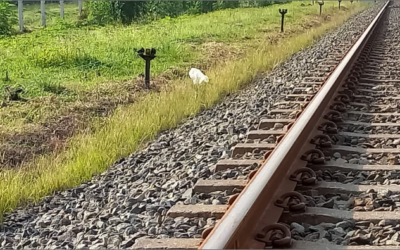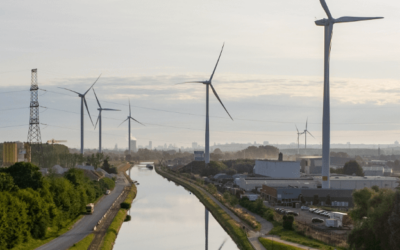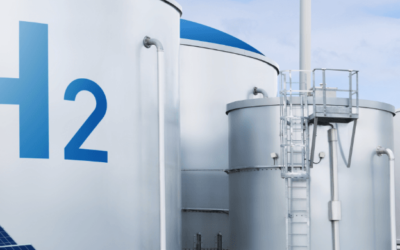Hydrogen Production Facilities
Grant scheme for large-scale production of fully renewable hydrogen via Electrolysis (OWE)
OWE is the short name of the grant scheme for boosting Dutch investments in the production of green hydrogen by electrolysis. The grant can be applied for the realization and operation of renewable hydrogen production plants (“electrolysers”).
In short
Hydrogen via electrolysis overview
For who?
This grant is for companies that invest in (purchase and use of) an installation for the production of fully renewable hydrogen using electricity from solar or wind. More specifically, these are electrolysers with a minimum capacity of 0.5 MW.
When?
Applying for this grant can only be done within official application rounds. The OWE grant call 2024 will open on 15 October and closes on 28 November 2024 (the original deadline of 31 October has recently been extended by 1 month).
How much?
The amount of the grant can vary from project to project. The maximum grant rate in 2024 is 80% of the investments costs, supplemented by an operating grant for covering the unprofitable top for 5 to 10 years of operation. An applicant can apply for a maximum grant of EUR 9 per kg of fully renewable hydrogen and a total maximum grant of EUR 499,165,000 per application.
For what?
The grant consists of two parts: an investment part and an operating part. The investment part is a contribution to the costs of (among other things) the electrolysis installation itself, and is paid out during the realization phase. The second part with the operating costs is paid during the operating phase of the plant. The grant applicant may determine the operating period of the grant: it must be between a minimum of 5 and a maximum of 10 years (rounded to whole years).
Meet the requirements
OWE grant scheme criteria
They must be electrolysers with an input capacity of at least 0.5 MW, for hydrogen production that is "fully renewable" according to EU standards.
The installation must be located in the Netherlands and must be connected to the electricity grid and/or have a direct connection with the wind or solar PV installation that generates renewable electricity.
The installation must emit 70% less greenhouse gases than a 'reference installation' (our experts can provide further explanation of this criterion, with calculation examples).
When applying for the grant, the following must be provided:
A feasibility study of the project (including revenue forecasts and operational calculations), if available the required (environmental) permits for the installation, and consent from the location owner. New: you must also indicate the price at which you are selling the hydrogen and to whom.
For installations connected to the electricity grid, a recent 'transport indication' is also required (confirming the availability of transport capacity for electricity use by the grid operator). A written offer from a power supplier (power purchase agreement) must also be enclosed. The offer must be valid for at least the first 3 years of the operation phase.
Furthermore, at the time of the grant application, the hydrogen production plant must not yet be in operation. Also, no irreversible commitments must yet have been made for the installation itself (such as payments, final commissioning).
Among other, things new in 2024 is that the final decision for the environmental part of the environmental permit is no longer required for submitting the application. Applications may also be made with only a submitted environmental permit (environmental part).
The grant scheme works according to the tender principle: only the best projects receive grant. The main starting point is the question: how much grant do you need in relation to the input power of the electrolyser? In other words, the lower the requested grant amount (per megawatt of electrical input power of the electrolyser to be realized), the greater the chance of getting a grant.
Why this grant?
Purpose of the OWE grant
The Climate Agreement includes the ambition to scale up hydrogen production via electrolysis to approximately 500 MW of installed capacity by 2025. The difficulty is that electrolysis projects often fail to materialize because of a substantial “unprofitable top” and large technological and financial risks. For this reason, the PRA scheme was created, with a combination of investment and operating grants.
The MRA is intended to meet a need that is not met by existing grant instruments, such as the DEI+ (an investment grant for pilot/demonstration projects), the SDE++ (operating grant, including for hydrogen from electrolysis), the HER+ (an investment grant for innovation projects that lead to sustainable energy production at lower cost), the VEKI (grant for CO2-saving investments with a payback period of five years or more).
Get in touch
What can EGEN do for you?
The experts at EGEN have years of experience with grants and know exactly what to watch out for in schemes that distinguish between investment and operational costs (such as OWE and the earlier SDE). They can help make your grant application optimally ‘competitive.’ Interested? Fill out the form below, and we will contact you soon!
“Despite being new, the scale-up instrument has many similarities with the SDE. Our years of experience with this instrument can therefore be used to prepare a good application as effectively as possible!”
Contact Joep Raats →


Stay up to date
News
EGEN supports ProRail with successful LIFE application for nature-friendly vegetation removal along railway tracks
The new call of the European LIFE programme has been opened in April. LIFE is the European Union’s funding instrument for projects focused on nature, environment, climate, and the energy transition. It offers a unique opportunity to turn innovative and sustainable...
Two new Horizon calls published for sustainable energy
The European Commission's Horizon Europe Work Programme for 2023-2024 has allocated 188.6 million EUR to support sustainable energy projects within Cluster 5. This cluster covers the areas of Climate, Energy and Mobility, and as such is a vital component of the EU’s...
Three tips for a successful EHB Auction proposal
The European Hydrogen Bank (EHB) is an initiative of the European Commission established in 2023 with the aim to support among other things the EU domestic renewable hydrogen production. At EGEN, we are dedicated to navigating the European Hydrogen Bank Auction...


